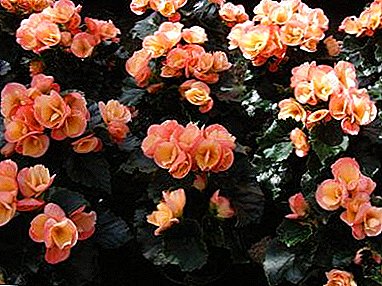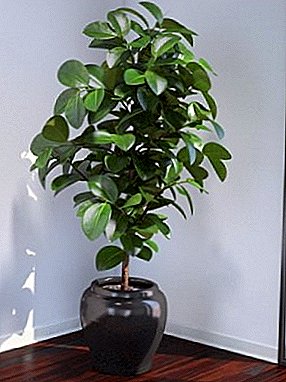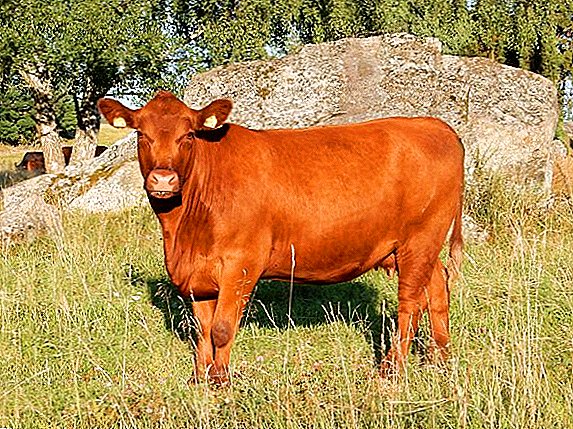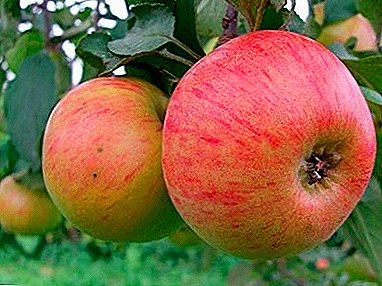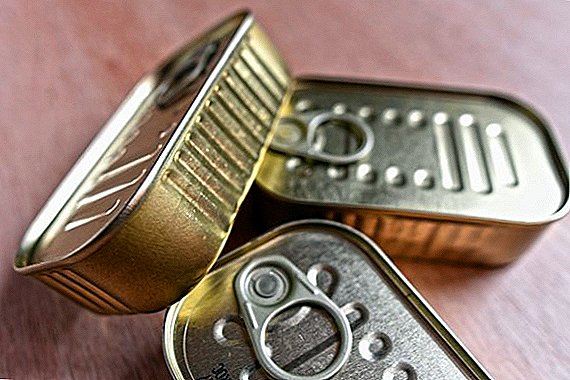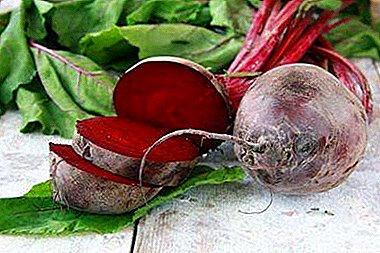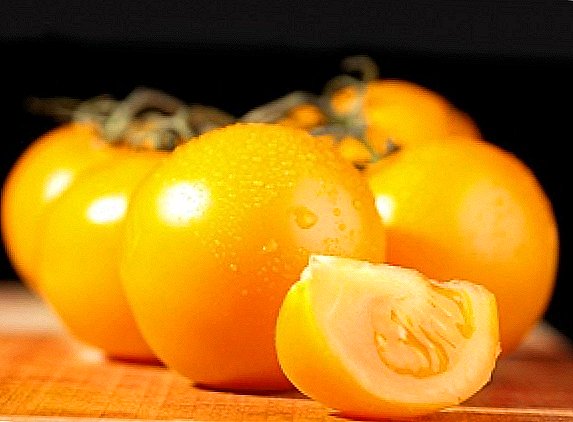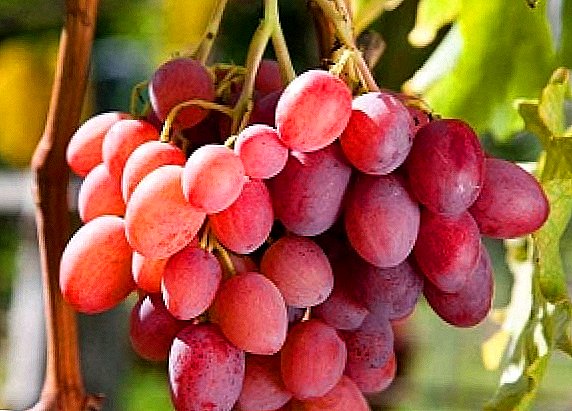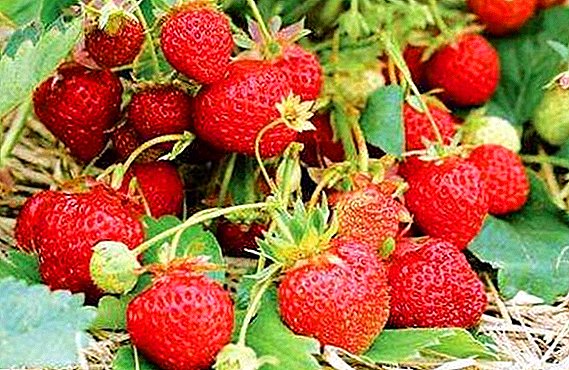 Surely, when you hear the word "land", the subconscious suggests the connection between all the known berries. But let's see what kind of animal this is - an earthquake, and what it is eaten with.
Surely, when you hear the word "land", the subconscious suggests the connection between all the known berries. But let's see what kind of animal this is - an earthquake, and what it is eaten with.
What it is?
The brief description boils down to the fact that the land of a dwelling is an unpretentious hybrid of forest strawberries and garden strawberries. Bred by the most famous female breeder Tatiana Sergeevna Kantor, the berry has a more pronounced taste and an impressive size in comparison with its relatives.
The shrubs are similar to strawberry trees, but they have a more magnificent look: the flowers on them are much larger and the bush itself is thicker and higher. The advantage of breeding this crop is the fact that the berries are tied up high and this allows them not to get sick with gray mold. With one bush can not collect at least 400 grams of berries, the size of a matchbox. Fruits are especially useful fresh, but for making jam and jams, this is a great option: because of its rather high density, the berry practically does not lose its shape during heat treatment.
This advantage is used when decorating desserts. Also, this plant is valued for winter hardiness, disease resistance, low maintenance, and long shelf life. Also, this berry is easy to transport: the fruit is quite dense and therefore less vulnerable than the fruits of strawberries and strawberries.
Learn more about such delicious strawberry varieties as: "Lord", "Russian Size", "Malvina", "Asia", "Masha", "Queen Elizabeth", "Elizaveta 2", "Gigantella", "Festival", " Marshal, Albion.
Popular varieties
The first cultivated varieties of earthworks differed in the poor ovary of berries. Eliminating this disadvantage, breeders managed to bring varieties whose yield reaches half a kilogram of berries from one bush. Common varieties today are:











Important! The largest fruit and strong aroma is of the land of the Kopchikha variety.
Growing conditions
The landowner is unpretentious in planting and careless in care, which makes it increasingly popular among gardeners.
Lighting and plot
This plant is very light-loving, for optimal yield, choose a well-lit place. This berry can grow in shady areas, then the period of ripening berries will be two weeks longer, and, therefore, the harvest will last longer.
Soil for the landlords
Like strawberries, earthfruit is most comfortable to grow in light, slightly acidic soil. She also loves moisture, so it’s good if your site has a high groundwater storage. 
How to plant a berry?
The agrotechnical cultivation of earthlings is not much different from strawberry or strawberry. The difference is that the bushes grow thicker and razlohimi, so when disembarking, leave between them a considerable distance. This will contribute to natural ventilation and allow the bushes to grow more magnificently.
Landing time
There is no specific term for planting earthwalks. The optimum temperature for the growth and ovary of the berries is 20-25 ° C. Therefore, the period of disembarkation of young rosettes of earthlings begins from the end of spring and lasts until the beginning of autumn.
Did you know? On one bush 20 flower stalks are formed, on each of which there are 10 berries. The harvest of a single bush can be equal to the harvest of a strawberry bed!
Soil preparation
To prepare the ground for planting, apply a mineral-organic fertilizer. Based on the 3 square meter composition of the feeding will be as follows:
- 600 grams of ash;
- 15 kg of manure;
- 60 g of superphosphate;
- 60 g of ammonium nitrate.

Powering out sockets
Place the sockets not deep, at a distance of at least 30 centimeters: this will allow the bush to start new shoots and provide adequate ventilation of the air under the already grown bush. Disembarking can be done in chess, carpet, ordinary, nesting ways.
Important! Carpet-like planting has its advantages: with this arrangement, strong sockets muffle the growth of weeds, and the ground under the bushes for a long time remains wet.
Care features
Since the earthfruit has the genes of a wild plant - wild strawberry, it needs minimal care.
Watering
This plant is very moisture-loving, but it does not tolerate waterlogging. Frequent and abundant watering is necessary only in the dry season, while at the same time, wide sheets retain moisture for a long time in the root zone.
Top dressing
Since most of the energy of the berry consumes during flowering, and it blooms magnificently and can serve as a good decoration for your site, it must be fed several times during the season.  The first - before flowering, the second - at the end of flowering and the third - when the harvest is already gathered. Both mineral and organic supplements that do not differ from those of strawberries and strawberries are suitable.
The first - before flowering, the second - at the end of flowering and the third - when the harvest is already gathered. Both mineral and organic supplements that do not differ from those of strawberries and strawberries are suitable.
Also foliar top dressings are effective: solutions of potassium permanganate (0.2%), boric acid (0.2%), urea (at the rate of 45 g per 15 liters of water).
Soil care
As with any other crop, caring for the site where it grows provides for weeding, moisturizing and drying, if necessary. Weeding the soil from the weeds is necessary depending on the method of planting bushes.
Since it is impossible to loosen the ground near the root of these plants, because its bedding is quite shallow, it is recommended to carry out a zinging - to powder the earth around the bush.
Protection against diseases and pests
Gardeners claim that this berry is practically not susceptible to gray rot, is not afraid of powdery mildew and mite, which is the most dangerous pest of berry crops. But preventive treatment of diseases and pests is still necessary.  General processing recommendations are the same as for strawberries: spray bushes need three to four times per season with copper-containing solutions, and after flowering, two treatments with fungicides should be carried out at intervals of 2-3 weeks.
General processing recommendations are the same as for strawberries: spray bushes need three to four times per season with copper-containing solutions, and after flowering, two treatments with fungicides should be carried out at intervals of 2-3 weeks.
Shelter for the winter
Covering the plant for the winter is worth it only if there is little snow in your region. This culture is frost-resistant and easily tolerates temperatures of -30 ° C. If by the time of the spring cooling the flowers have already appeared on the bushes, then it is worth covering the plantations with burlap or other light.
Breeding
Zemchloin produces a large number of whiskers, without pruning which, over time, you can get a solid plantation. Sockets are formed on the uterine whiskers, which easily germinate in any soil.
For breeding it is better to take sockets from young whiskers. But the most effective method of reproduction is the division of an already grown bush, and the division must be done manually. 
Important! This berry has a strong diuretic effect, therefore it is contraindicated for use by people with renal diseases.
As you can see, the name itself turned out to be the most difficult in the concept of what an earthquake is. Cultivation and care do not present much difficulty. By following the rules and recommendations this year, you will definitely get a rich harvest next year.



